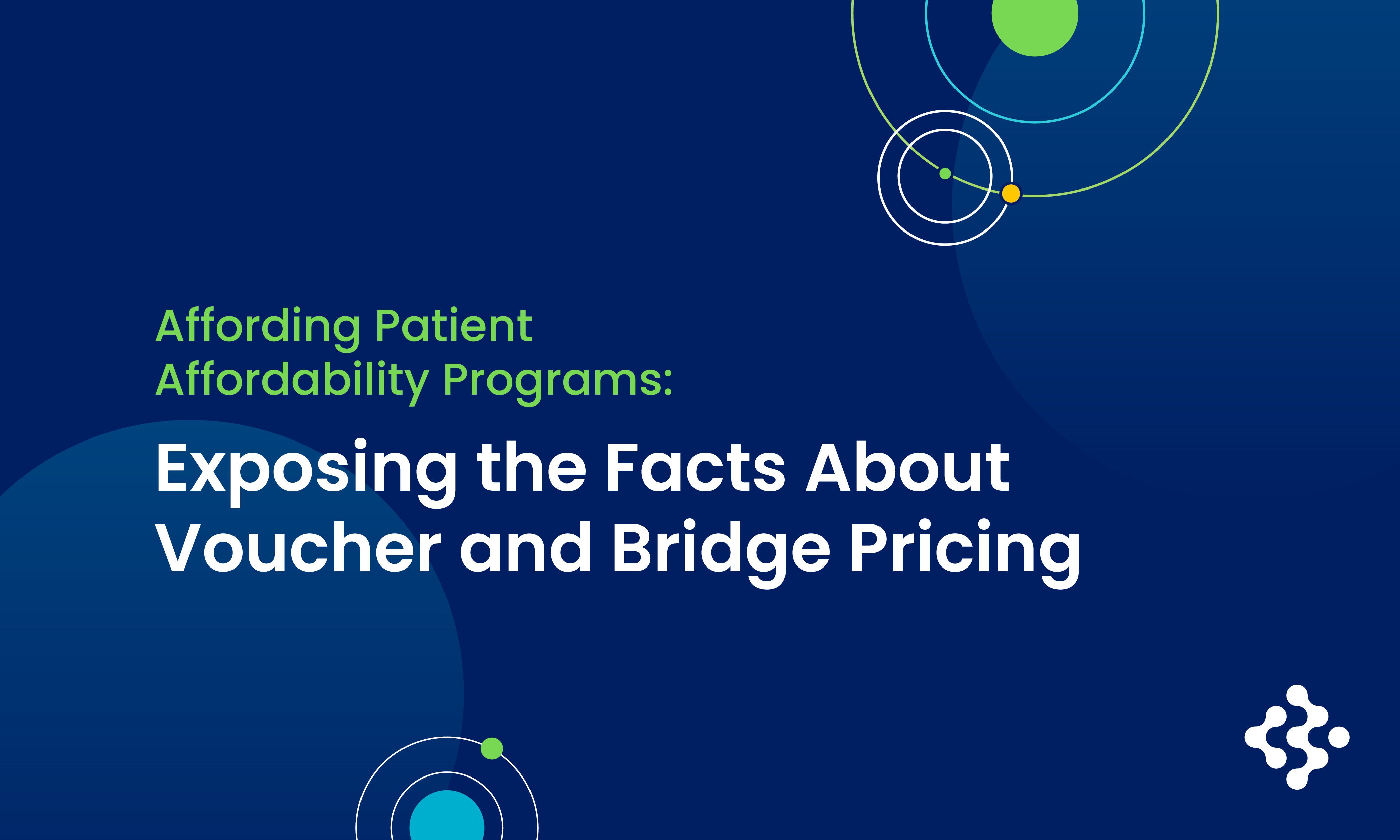Our guest post, “Exposing the Facts About Voucher and Bridge Pricing”, was featured on Drug Channels, an established site which includes expert insights on pharmaceutical economics and the drug distribution system. This article discusses the truths behind voucher and bridge pricing within patient affordability. Read the full article below:
In recent years, we have all witnessed the explosion of accumulator programs. Now more than ever, there is a need for transparency in the patient affordability space. Most vendors who provide patient affordability (PA) solutions, such as copay, voucher, and bridge programs, have been outspoken when discussing how accumulators divert funds intended for a patient to entities such as pharmacy benefit managers (PBMs). However, the unfortunate truth is that many of these vendors are engaged in a similar practice. While criticizing PBMs, they have quietly made hundreds of dollars per claim on voucher and bridge programs, hidden from view of their manufacturer clients. It is time for patient affordability providers to step up and model the level of pricing transparency needed to illuminate pricing practices across the industry as a whole.
Understanding copay voucher and bridge program pricing requires us to accept that almost every vendor in the patient affordability space does it, regardless of what you’ve heard. And the complexities within our pharmaceutical supply chain make it easy for these hidden revenue streams to go unchecked.
Let’s start with average wholesale price (AWP), the widely accepted benchmark price for drug payers. Pharmacies contract with a claims processor at a specific negotiated rate, represented by a percentage discount of AWP. For example, a big pharmacy chain may have a rate of AWP -12.5%. A smaller, independent pharmacy might have a rate of AWP -17%.
Dispensing fees are charged by the pharmacy and can vary as well. Pharmacies and their chains can negotiate better rates based on the types of drugs they dispense, their geographic location, and the most significant pricing influence—the number of patients they reach. This is true of both retail and specialty pharmacies.
To give you an idea of a typical spread on a voucher claim, let’s suppose the vendor bills their manufacturer at AWP -9%, and the pharmacy contracts at AWP -12%. That means the vendor has pocketed 3% of the AWP of the drug in that transaction. Imagine if that was a specialty drug with an AWP of $15,000, in-office dispensing (IOD), and a contracted rate of AWP -17.5%. That means the vendor pocketed $1,275 on one fill. This demonstrates how much money can be made by a PA vendor implementing spread pricing on a single voucher claim. But, what happens when we extrapolate this over a year? The economics become staggering. PA vendors ensure they will make a significant profit on every voucher claim, no matter what pharmacy dispenses the drug – on average, over $700 on each voucher claim.
Here is another scenario—with financial implications that equal a gross-to-net impact for the drug brand. Let’s use a mid-sized brand with a limited distribution network of three to four pharmacies, no “wholly owned” chains in the mix, and IOD pharmacies to round out the coverage.
Let’s say they process an average of 2,500 vouchers per month, and the PA vendor negotiated a rate for the voucher program of AWP -11% on a $19,500 drug. Given the makeup of the pharmacy network, the average pharmacy would contract at AWP -15%. The PA vendor in this equation receives an additional payout of $23.4 million over a year. Yes, you read that correctly.
But it’s not all bad news. I want to leave manufacturers with some helpful tools for determining the total cost of running copay, bridge, and voucher programs over their lifespan.
• Be prepared to evaluate every listed fee in conjunction with hidden cost areas, such as voucher and bridge spread, and compare that with vendors with a transparent pricing model.
• Dictate in your contracts that pharmacies must receive the total amount of any passthrough costs attributed to voucher claims, dispensing fees, and other areas where there is potential for spread.
• Validate all current programs and have your sales rep talk to a partner pharmacy and see what was actually paid.
As a trusted provider of patient affordability solutions for over two decades, the Paysign team is here to help ensure honesty and transparency in pricing practices for our industry. On Wednesday, July 13, we will be hosting an informative webinar to discuss this topic in detail, give real-world examples, and arm you with tools to evaluate the contracts and billing of your current provider. Click here to register. Or, contact us at affordability@paysign.com if you would like a detailed analysis of your current program.
To view article on Drug Channels, click here.
